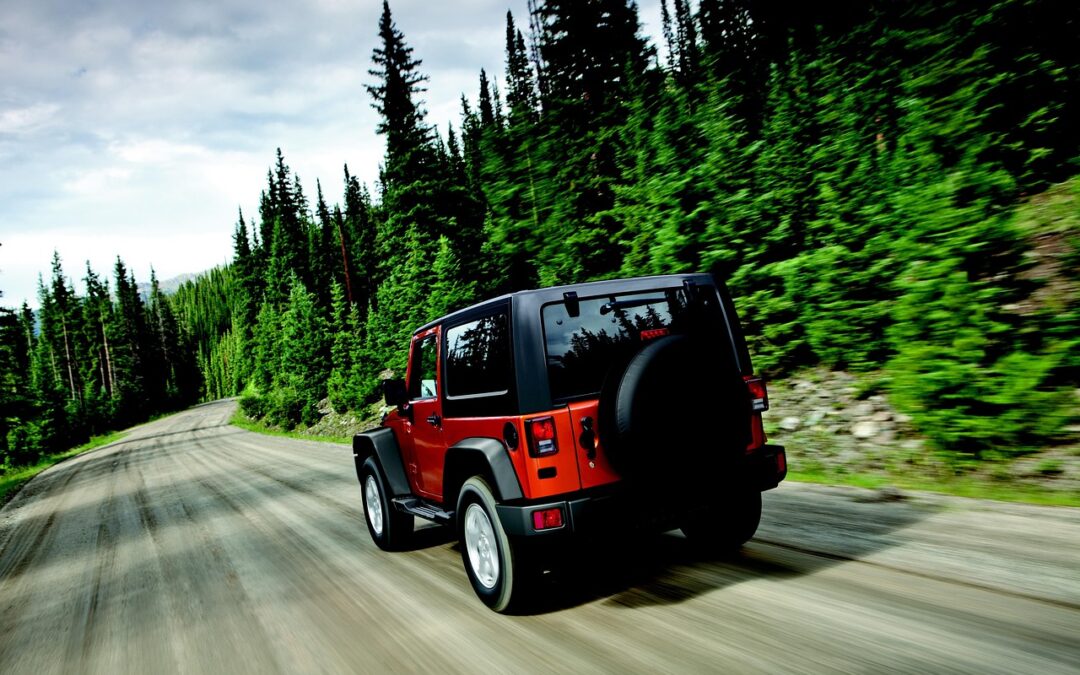Jeep is more than just a vehicle—it’s a culture, a legacy, and a badge of honor for off-road enthusiasts across the globe. At Jeeping Nation, where adventure meets loyalty, understanding the roots and ownership of our beloved brand helps us appreciate every trail ride even more. From its rugged WWII origins to being a staple on modern trails, Jeep has traversed decades of change. So who really owns Jeep today? Let’s break it down.
The Origin of Jeep: Forged in the Fire of War
The Jeep story begins in 1940, at a time when the world was on the brink of chaos. The U.S. Army needed a nimble, all-terrain reconnaissance vehicle that could outperform motorcycles and mules in combat zones. Three American manufacturers stepped up: Bantam, Willys-Overland, and Ford.
Eventually, Willys-Overland won the government contract, delivering a vehicle that would become iconic on and off the battlefield—the Willys MB. Its boxy build, flat fenders, and 4×4 drivetrain gave it unmatched versatility. From storming the beaches of Normandy to hauling troops in the deserts of Africa, this compact warrior proved unstoppable. In fact, General George C. Marshall hailed it as “America’s greatest contribution to modern warfare.”
There’s still debate over the origin of the name “Jeep.” Some say it came from Eugene the Jeep, a magical character from the Popeye comics. Others believe it stemmed from the abbreviation “GP” for “General Purpose.” Regardless of how it got its name, what’s not debatable is its ability to “go anywhere, do anything.”
After producing over 600,000 Jeeps during WWII, the vehicle became a legend—and it wasn’t done yet.
Jeep’s Civilian Era Begins
Post-WWII, Willys-Overland retained the Jeep trademark and pivoted to civilian production. The rugged capabilities that served soldiers so well were now offered to the general public through models like the Willys CJ-2A, Willys Station Wagon (1946), and Jeep Pickup (1947). These early civilian Jeeps preserved the utilitarian charm of their military ancestors but were tweaked for everyday life.
The CJ (Civilian Jeep) series, especially, laid the groundwork for what would become a full-blown off-road movement. And as the community grew, so did the brand’s appeal beyond just utility—it became a lifestyle.
Jeep Ownership Timeline: The “Jeep Curse”
Despite its growing popularity, Jeep’s parent companies often struggled financially. This strange paradox—Jeep thriving while its corporate owners stumbled—became known as the “Jeep Curse.”
- 1953: Willys-Overland was acquired by Kaiser Motors for $62.3 million. The company was renamed Kaiser-Jeep.
- 1970: American Motors Corporation (AMC) took over, integrating Jeep into a broader portfolio.
- 1979: Due to financial challenges, French automaker Renault bought a 25% stake in AMC.
- 1987: Chrysler Corporation acquired AMC for $1.5 billion, eyeing Jeep as the crown jewel. This deal birthed the Jeep Wrangler—arguably the most iconic Jeep of all time.
Enter the Global Players: Daimler, Cerberus, Fiat
Chrysler’s hold on Jeep was short-lived.
- 1998: German automaker Daimler-Benz merged with Chrysler, forming DaimlerChrysler in what was dubbed a “merger of equals.” But cultural and operational clashes made it a turbulent union.
- 2007: Daimler sold off most of its Chrysler holdings to private equity firm Cerberus Capital Management. The new entity was rebranded as Chrysler LLC.
- 2009: The global financial meltdown forced Chrysler into bankruptcy. That’s when Fiat, the Italian car manufacturer, entered the picture.
Fiat initially acquired a stake in Chrysler as part of a government-assisted recovery. Over the next few years, Fiat gained full control by purchasing remaining shares from the U.S. and Canadian governments, as well as the United Auto Workers pension trust. By 2014, Fiat had merged fully with Chrysler to form Fiat Chrysler Automobiles (FCA).
The Stellantis Era: Jeep Today
In January 2021, another major shift occurred. FCA merged with the French PSA Group (parent company of Peugeot) to form Stellantis, a global mega-conglomerate in the auto world.
Stellantis may be officially headquartered in Amsterdam, Netherlands, but it’s a multinational force, combining American grit, French innovation, and Italian design. Jeep is now one of 14 car brands under this new automotive constellation, alongside Dodge, Ram, Chrysler, Fiat, Alfa Romeo, and Maserati.
Where Are Jeeps Made?
Despite the globalization of Stellantis, Jeep production largely remains an American affair—especially for the off-road-focused models beloved by Jeeping Nation members.
- Toledo, Ohio: Home of the legendary Wrangler and Gladiator. The Toledo Assembly Complex spans over 3.6 million square feet and employs nearly 6,500 workers.
- Detroit, Michigan: The Grand Cherokee L is built at the Detroit Assembly Complex Mack Plant, the city’s first new vehicle assembly site in decades.
- Belvidere, Illinois: The Cherokee rolled off this line for years and ranked high on the Cars.com American-Made Index.
- Mexico and Brazil: Some versions of Jeep’s compact and subcompact SUVs, like the Compass, are built in facilities across North and South America.
- Italy: The Jeep Renegade, in partnership with Fiat’s 500x, is produced in Europe.
- India and China: Jeep has also expanded to meet demand in Asia, where local assembly helps reduce costs and comply with trade regulations.
Jeep Models: Built for Every Kind of Adventurer
Whether you’re into rock crawling, overlanding, or just want a vehicle that turns heads in the city, Jeep has something for everyone:
- Wrangler: The icon. Still a top choice for serious off-roaders, available in multiple trims, including the plug-in hybrid Wrangler 4xe.
- Gladiator: A Wrangler-style pickup that brings utility and adventure together, complete with removable doors and roof.
- Cherokee & Grand Cherokee: Midsize SUVs offering comfort with trail-ready features.
- Grand Cherokee L: Adds third-row seating to the beloved Grand Cherokee platform.
- Compass: A compact SUV with respectable off-road capability.
- Renegade: Jeep’s smallest SUV, but still trail-ready.
- Wagoneer & Grand Wagoneer: Premium, three-row SUVs designed for luxury road trips and family expeditions, offering V6, V8, and hybrid options.
Every Jeep model is built with versatility and capability in mind—traits that make them perfect companions for the Jeeping Nation lifestyle.
Frequently Asked Questions for Jeep Enthusiasts
1. Is Jeep still an American brand?
Culturally, yes. Legally, Jeep is owned by Stellantis, a Dutch-incorporated multinational. However, core models like the Wrangler and Gladiator are still proudly made in the U.S.
2. Does China own Jeep?
No. Despite rumors in 2017 about Great Wall Motor Co. making a move to acquire Jeep, the brand remains under Stellantis ownership.
3. Are Jeep and Dodge the same?
Not quite. Jeep and Dodge are separate brands under Stellantis. They share some technology and manufacturing facilities but have different target audiences and vehicle lineups.
4. When did Fiat acquire Jeep?
Fiat took its first stake in Chrysler (Jeep’s then-parent company) in 2009 after Chrysler’s bankruptcy. Fiat completed the acquisition in 2014, forming Fiat Chrysler Automobiles.
5. What’s Jeep’s role in Stellantis?
Jeep is considered one of the crown jewels in the Stellantis portfolio, helping drive global sales thanks to its rugged reputation and loyal fanbase.
Final Thoughts from Jeeping Nation
Whether it’s climbing rocks in Moab or forging through muddy trails in the Appalachians, Jeep continues to symbolize freedom, strength, and adventure. While corporate hands may change, the spirit of Jeep remains unchanged—built for the road less traveled.
At JeepingNation.com, we celebrate every chapter of Jeep’s journey. From the Willys MB to the modern-day Wrangler Rubicon, Jeep remains the ultimate symbol of off-road passion and trail-tested excellence.



